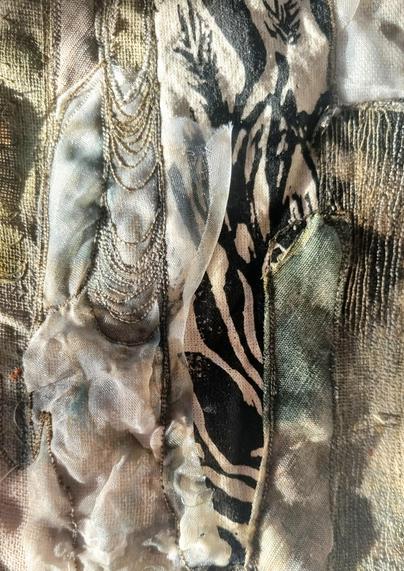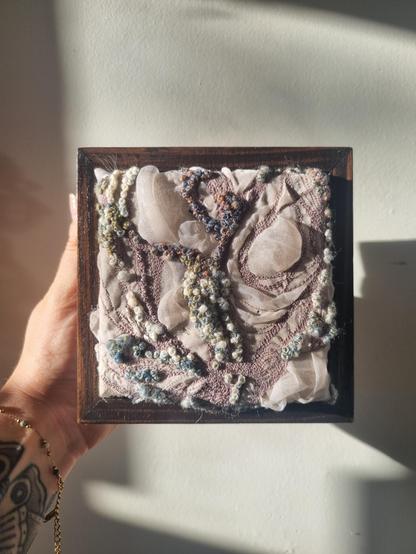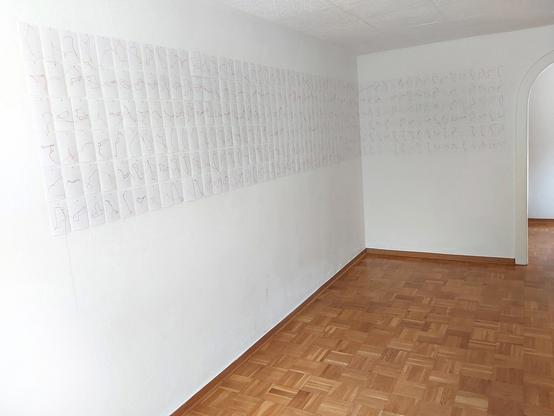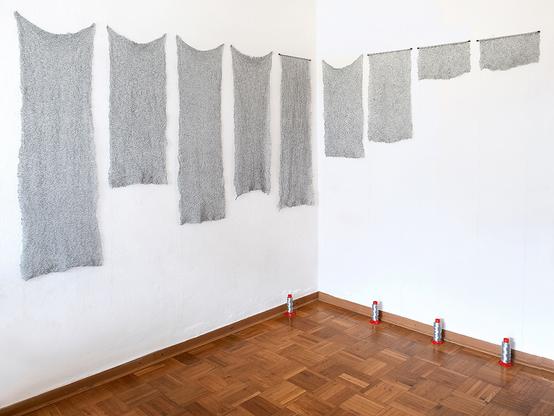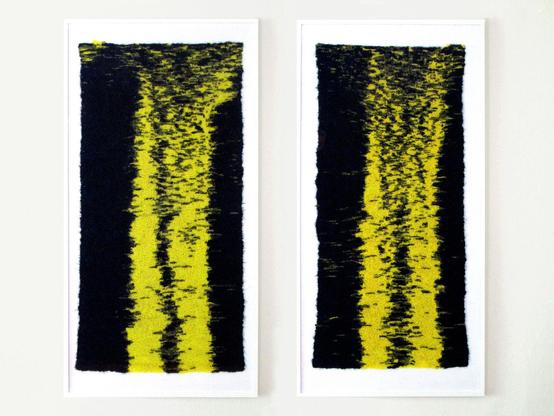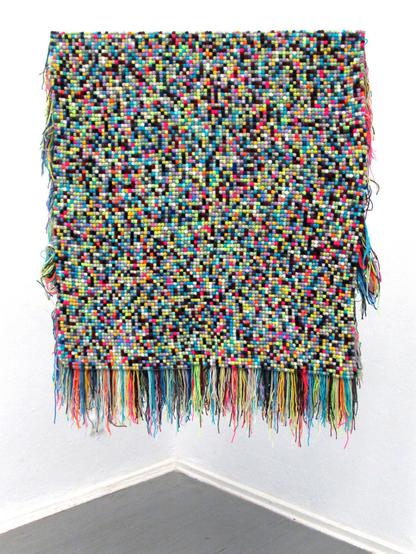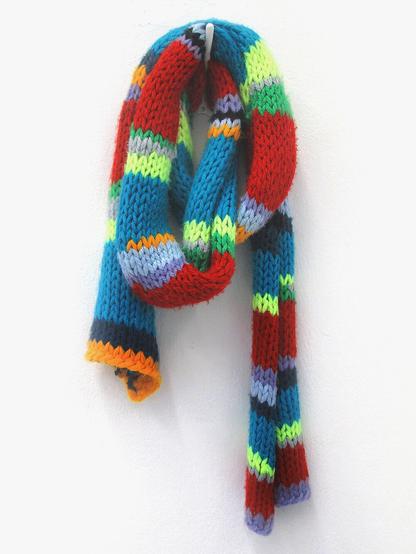ANCESTRAL HUES
The lives of my forefathers
This work deals with one theme, life, and with ten of its infinite possible variations: the lives of my forefathers, visualised here as colour arrays.
I have a family tree going back to the early 16th century. When searching for the dates of my ancestors, I discovered that the exact dates of birth and death are known for ten generations. To be clear: Only of the forefathers – of their wives there is often no more left than a name, if at all.
For this work, I used a yarn available in 100 different shades, i.e. as many shades as there are years in a century. I assigned each shade a number between 00 and 99 as follows: 00-09: whites, 10-19: purples, 20-29: browns, 30-39: reds, 40-49: oranges, 50-59: yellows, 60-69: greens, 70-79: turquoises, 80-89: blues, 90-99: blacks.
The colour arrays are a combination of the collected data and the assigned numbers: Each year lived by the forefathers is represented by the shade with the same number. For example the number 52 is assigned to neon yellow. Which means that everyone who lived in the year 52 in their respective century has neon yellow included in their colour array.
The number of stitches per year, and thus per colour, is fixed in advance and remains constant throughout. The number of different shades per colour array, on the other hand, depends on the length of the respective life. Therefore, the longer the life, the greater the colour diversity and the larger the stitched area.
The resulting colour array gives each life its own overall hue. Each hue is a glimpse into the past. No one alive can know their own hue.
(Embroidered acrylic yarn on my grandmothers’ handwoven dowry linen, 10 works from 43 x 37 cm to 46 x 41 cm, embroideries from 25 x 12 cm to 25 x 20 cm, 2022)
https://ruth-thomas.net/ah
#ancestralhues
